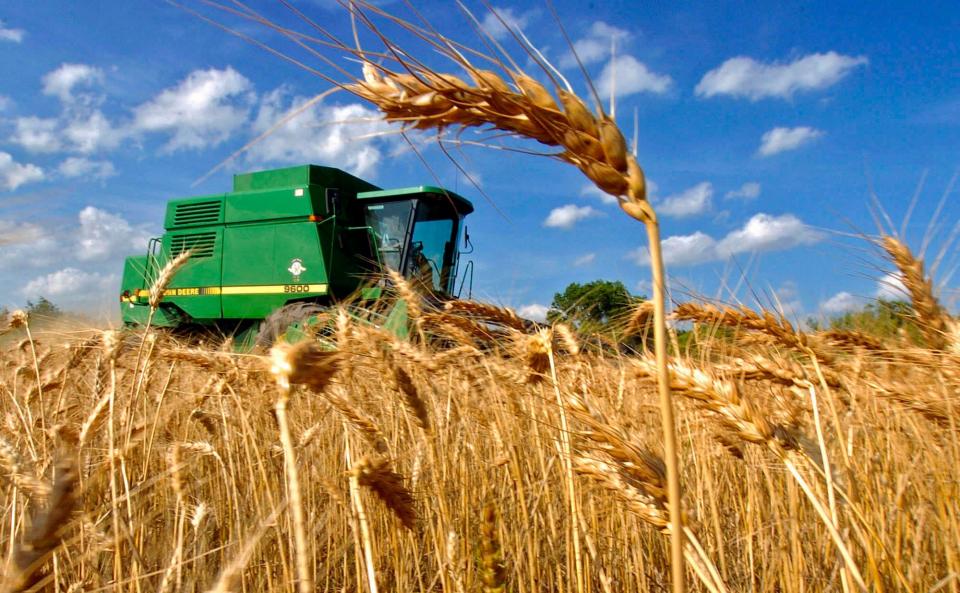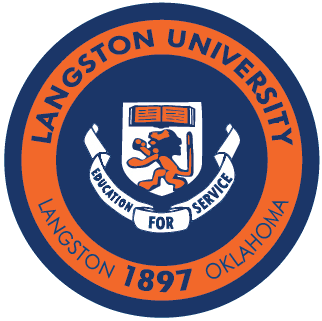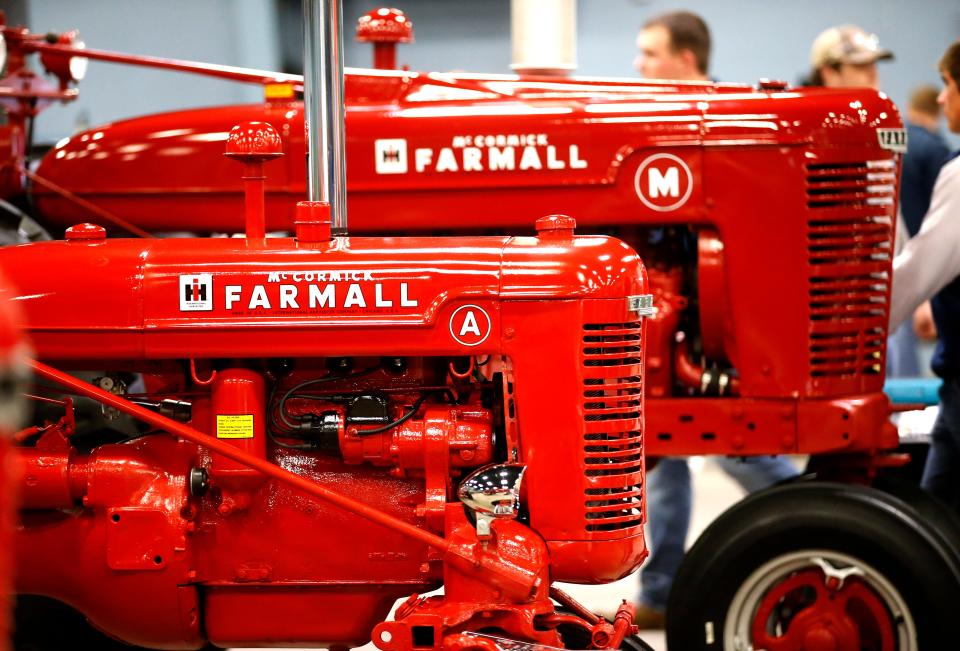Remaining rooted: Collaboration sown in history impacts the future of Oklahoma agriculture
Agriculture has been a dominant force in the Oklahoma economy since before the territory became a state. After overcoming desperation during the Dust Bowl, the state regained a place as a top of farming state, with more than three-quarters of the state as farmland, according to okcommerce.gov.
Today the state continues to stand out in the field of agribusiness, yet, despite a long history with agriculture and food production, Oklahoma is also home to a number of food deserts.
Now Oklahoma's extensions, local food advocates and family-owned farms are partnering to improve food systems in efforts to provide more opportunities for more Oklahomans for one thing — access. Access to food, access to opportunities and access to the things that come from being afforded both.
What are some of the problems agriculture in Oklahoma has faced?
The industrial revolution in the late 1800s saw the establishment of land-grant universities even as the rise of factory farms beginning in the 1920s and continuing through the 2000s, led to the demise of many family farms.
“Oklahoma was really targeted where small farmers were already growing food, they were really targeted and transformed into large ag operations,” said Mary Bixler, local food advocate and public information officer for the Cleveland County Health Department.

Today, as work is being done to reestablish small farms, a lack of available infrastructure creates problems. Bixler said many small farmers struggle to establish profitable margins because they are having to invest in the infrastructure themselves. In addition to that, the voices of small farmers and those who need greater access to local food are often ignored.
“With a lot of the community-based grassroots approaches to food sovereignty essentially and like agency in the food system have been siloed conversations and again, people have been left out of that conversation so absolutely there’s not trust,” Bixler said.
Additionally, specialization amongst farmers has suffered due to a historical emphasis on commodity crops — like wheat, soybeans and corn — and their perceived role in sustaining agriculture as an economic industry.
“When we think about commodity crops and things like that, there are subsidies and very, very deep level support that's out there to help people,” said Josh Campbell, Oklahoma County Agriculture Educator for OSU Extension. "There hasn't historically been as much of that for the small farmers, especially when we think about specialty crops.”
What is an extension or land-grant university?
Extension universities, or land-grant universities began in the late 1800s across the country as a way to help advance education as the industrial revolution began.
"We're here to be basically a shoulder to the wheel, helping people in all walks of life with the problems that they have, and so we do a number of things, not just agriculture, although primarily the work we do is rooted in agriculture and kind of our founding mission, 150 plus years ago, was started with the idea of supporting farmers and rural America, that has morphed over generations to anybody and everybody," Campbell said.
While all states have land-grant universities, Oklahoma stands alone as the only state in the nation with three — Oklahoma State University; Langston University, a historically Black institution; and College of the Muscogee Nation, a Native American university.

What is the role of land-grant universities today?
Today, extensions are a key piece in the reestablishment of the small family farm.
"Primarily my work day-to-day involves supporting small farmers, people that are new and beginning farmers, people that are what you might call 'small acreage producers,' so people that are growing for farmers market or growing for sale to restaurants, things of that nature and that's kind of the client that I support the most,” Campbell said.
Campbell helps farmers with finding funding, offering advice on business plans, and more. In addition to helping small farms directly, Campbell and others at the extensions also work with area nonprofits, local food advocates, health departments and more to reimagine how local food systems function as a whole.
“With a lot of the things we've experienced as a global society, over the last few years with the global pandemic and now some of the conflict that's going on in in Europe and other places, I think that as a society and also the American government is realizing the value of local and urban centric food production in a way that we never have,” Campbell said.

How do these partnerships benefit Oklahomans?
The obvious benefit to growth in local food movements is keeping money in the local economy.
"When we invest in our small farmers in Oklahoma, we are investing in small family businesses, which ultimately is investing in the communities in which we live and work and strengthening our state as a whole,” Campbell said.
But the work being done by extensions and advocates also looks to use Oklahoma's agriculture systems to create more solutions to hunger. According to Hunger Free Oklahoma, the state actually ranks among "the top 10 most food-insecure states in the nation," with food insecurity affecting 15.6% of households.
"One of the biggest issues that that we are seeing and that we're facing is we have huge demand for fresh, healthy, local foods and not enough people to supply it," Campbell said. “When it comes to food economics of local areas and food, what I would call security — food resiliency — a lot of good can be done by investing in food production in and around urban areas and focusing on creating more farmers.”
As more farms come online through partnerships with extensions, the infrastructure Bixler mentioned has to be put into place to help sustain them and make them successful. Campbell said this is one of the key roles of the government and something they are already working with nonprofits and advocates to troubleshoot.
One way this is happening is with the creation of food hubs. Food hubs have the potential to localize supply chains and increase opportunity for small farmers and retailers traditionally left out of the food distribution conversation while also increasing access for the community.
"It's not just a farmers market and it's not just operations that look like Urban Agrarian or Flora Bodega, but it’s like all of them. And it’s chefs purchasing local ingredients and native plants and foods that grow here from local farmers. But it's also reestablishing a food hub and mobile market so that this food isn't just available for the people who can get to downtown Oklahoma City farmers market, or Paseo in these rich areas," Bixler said.
Multiple food hubs are already in the works in Tulsa, including The Tulsa Cooperative Regional Food Hub, a hub through Food On The Move, and a Northwest Tulsa Hub through The Common Good. Meanwhile in Oklahoma City, Bixler said a local advocate has obtained a USDA grant to create a food hub and mobile market.
"We need to be able to reach people who arguably, I think, need this food the most, and it has to be subsidized for them because local food is more expensive,” Bixler said.
This article originally appeared on Oklahoman: Oklahoma's agricultural future tied to collaboration rooted in past

